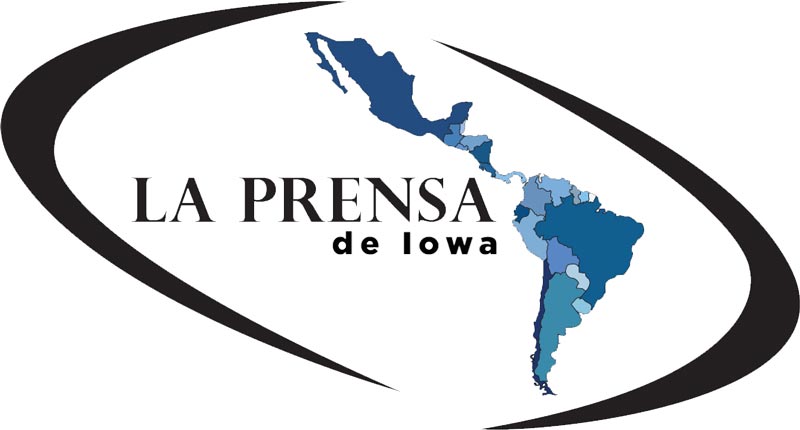Iowa, la primera estación hacia la Casa Blanca
/⇣ English translation provided at the end ⇣
Redacción
LA PRENSA
Iowa no es el estado más extenso, ni el más poblado de Estados Unidos. Sin embargo, cada cuatro años goza de una importancia muy particular porque se convierte en el centro de las inclinaciones electorales de sus votantes ya que es el primer lugar donde se miden las fuerzas de quienes competirán por la presidencia de Estados Unidos.
Este 3 de febrero los demócratas escogerán a sus candidatos en una jornada que se inicia a las 7:00 p.m. Las asambleas electorales, llamadas caucus, se celebran en los 99 condados de Iowa en 1681 lo que incluyen iglesias, bibliotecas y escuelas, entre otros lugares.
Solo los inscritos en cada partido pueden participar en los caucus. Este proceso se repite en distritos, condados y finalmente en diferentes estados que eligen a los delegados definitivos a las convenciones nacionales de cada partido. En las convenciones surgen los dos candidatos que aparecen la tarjeta electoral de noviembre.
Los caucus del lado demócrata son abiertos: los votantes primero se agrupan según el candidato de su preferencia e intentan convencer a los indecisos. Cada grupo que apoya a un candidato debe superar una cuota de personas, si no lo hacen se declaran “no viables” y deben unirse a un candidato que cumpla la cuota. También pueden declararse indecisas.
Los caucus republicanos son mucho más simples y se les considera un sondeo de opinión. Está permitido que representantes de cada candidato pronuncien discursos, luego se entregan tarjetas y los participantes votan en secreto. Este año no hay candidatos republicanos que busque despojar de la silla a Trump ya que este va en busca de su segundo periodo.
¿Por qué es Iowa el primer estado en votar?
Desde 1840 muchos ciudadanos activos en política se han reunido en Iowa durante las frías noches invernales para discutir sobre sus partidos, pero en 1972 todo cambió. Luego de una derrota en 1968, los demócratas cambiaron sus normas para seleccionar a los delegados del partido. Antes de eso los dirigentes podían programar las primarias sin consultarlo con las bases.
El nuevo sistema requería un mínimo de 30 días para organizarse y como Iowa tiene un proceso de cuatro fases (caucus, convenciones de condados, asambleas distritales y estatales) tuvo que anunciarse mucho antes. Sin embargo, otro factor conjuró para el establecimiento de la fecha. La convención estatal demócrata suele realizarse en junio, pero en 1972 no había habitaciones disponibles en los hoteles de Des Moines, la capital estatal, por lo que tuvo que adelantarse su celebración y esto implicó que los caucus debieron realizarse en enero de ese año.
Cuatro años después los republicanos también adelantaron sus fechas para medirse en Iowa al inicio de cada año. Desde entonces los caucus son el primer evento electoral en la carrera hacia la Casa Blanca y sus resultados tienen un gran valor simbólico para analistas, expertos y votantes.
Ejemplos recientes de su influencia fueron las candidaturas de George W. Bush y Barack Obama, quienes ganaron en Iowa y luego fueron presidentes. Pero no es una regla, porque George H. W. Bush ganó en los caucus de 1980 y no fue el abanderado republicano, en cambio John McCain terminó de cuarto y logró ser el candidato en 2008, pero perdió frente a Obama. Otros casos fueron los de Ronald Reagan y Bill Clinton, quienes ganaron la presidencia luego de perder en Iowa.
¿De dónde proviene la palabra caucus?
Se les llama caucus a las reuniones de simpatizantes o miembros de algún partido político. El origen de esta palabra tiene múltiples versiones: una de las referencias más antiguas se encuentra en los escritos del capitán John Smith en 1607, quien cita el término indígena “Caw-cawaassough” con el que los nativos americanos designaban a los hombres sabios y consejeros de las tribus.
También aparece en los diarios de John Adams (1763), en los que se le define como una reunión de un pequeño grupo interesado en cuestiones políticas.
Google Translation
Iowa is not the largest state, nor the most populous in the United States. However, every four years it enjoys a very particular importance because it becomes the center of the electoral inclinations of its voters since it is the first place where the forces of those who will compete for the presidency of the United States are measured. This February 3 the Democrats will choose their candidates on a day that starts at 7:00 p.m. Electoral assemblies, called caucus, are held in the 99 counties of Iowa in 1681 which include churches, libraries and schools, among other places. Only those registered in each match can participate in the caucuses. This process is repeated in districts, counties and finally in different states that elect the final delegates to the national conventions of each party. In the conventions, the two candidates that appear on the November electoral card appear. The caucus of the Democratic side are open: voters first group according to the candidate of their choice and try to convince the undecided. Each group that supports a candidate must exceed a quota of people, if they do not they declare themselves “non-viable” and must join a candidate who meets the quota. They can also be declared undecided. Republican caucuses are much simpler and are considered an opinion poll. Representatives of each candidate are allowed to deliver speeches, then cards are handed out and participants vote in secret. This year there are no Republican candidates looking to strip Trump of the chair since he is looking for his second term. Why is Iowa the first state to vote? Since 1840 many active citizens in politics have met in Iowa during the cold winter nights to discuss their parties, but in 1972 everything changed. After a defeat in 1968, the Democrats changed their rules to select party delegates. Before that the leaders could program the primary without consulting the bases. The new system required a minimum of 30 days to organize and as Iowa has a four-phase process (caucus, county conventions, district and state assemblies) it had to be announced much earlier. However, another factor conjured for setting the date. The state democratic convention is usually held in June, but in 1972 there were no rooms available in the hotels of Des Moines, the state capital, so it had to advance its celebration and this meant that the caucuses had to be held in January of that year.
Four years later the Republicans also advanced their dates to be measured in Iowa at the beginning of each year. Since then the caucuses are the first electoral event in the race towards the White House and their results have great symbolic value for analysts, experts and voters. Recent examples of his influence were the candidacies of George W. Bush and Barack Obama, who won in Iowa and then were presidents. But it is not a rule, because George H. W. Bush won in the 1980 caucuses and was not the Republican flagman, instead John McCain finished fourth and managed to be the candidate in 2008, but lost to Obama. Other cases were those of Ronald Reagan and Bill Clinton, who won the presidency after losing in Iowa. Where does the word caucus come from? Meetings of supporters or members of a political party are called caucus. The origin of this word has multiple versions: one of the oldest references is found in the writings of Captain John Smith in 1607, who cites the indigenous term "Caw-cawaassough" with which Native Americans designated wise men and counselors of the tribes. It also appears in the newspapers of John Adams (1763), in which it is defined as a meeting of a small group interested in political issues.























